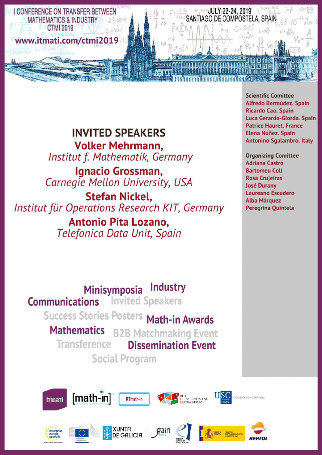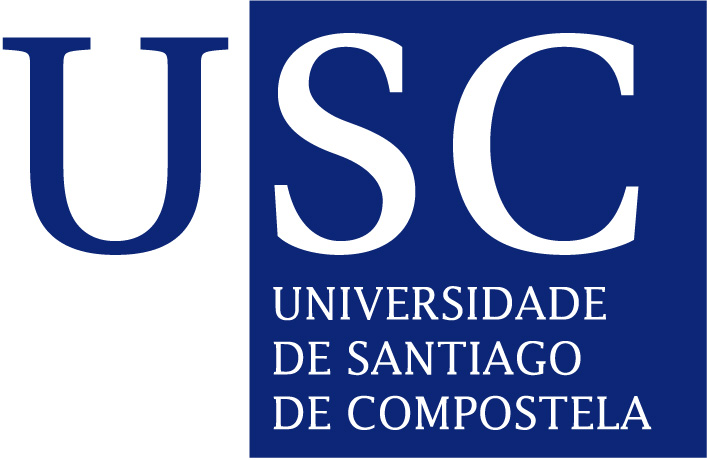About Santiago
CTMI 2019 will take place in Santiago de Compostela, a lively university town in the north west of Spain with about 100.000 inhabitants. 40 km from the coast, Santiago de Compostela is the capital of the region of Galicia.
The town is named after the Apostle Saint James (“Santiago”) who, according to the legend, is buried here. Santiago is the final destination of the legendary medieval way of pilgrimship Camino de Santiago (Way of Saint James). The city’s importance in the history of Christianity is such that it is the third holiest site in Christendom, after Jerusalem and Rome.
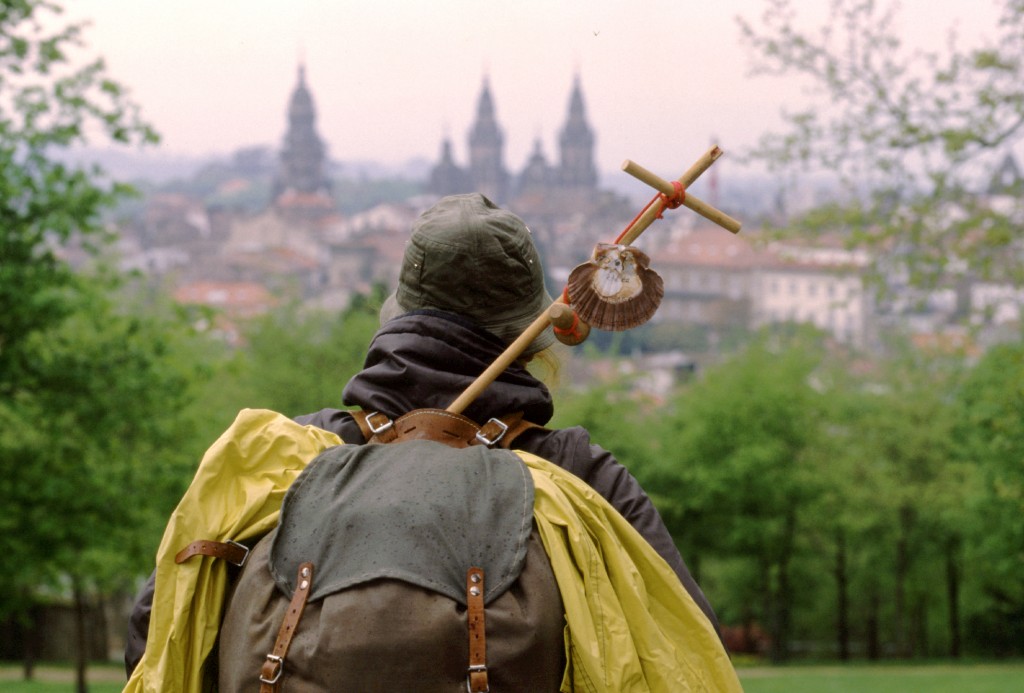
Pilgrim in the Way of St. James
One of the most beautiful of all Spanish cities, it attracts visitors from all over the world thanks to its fantastic monuments. The narrow streets of the Old Town are built from local granite and they are perfect for exploring on foot. The Praza do Obradoiro, with the great Baroque façade of the Cathedral, is especially glorious.
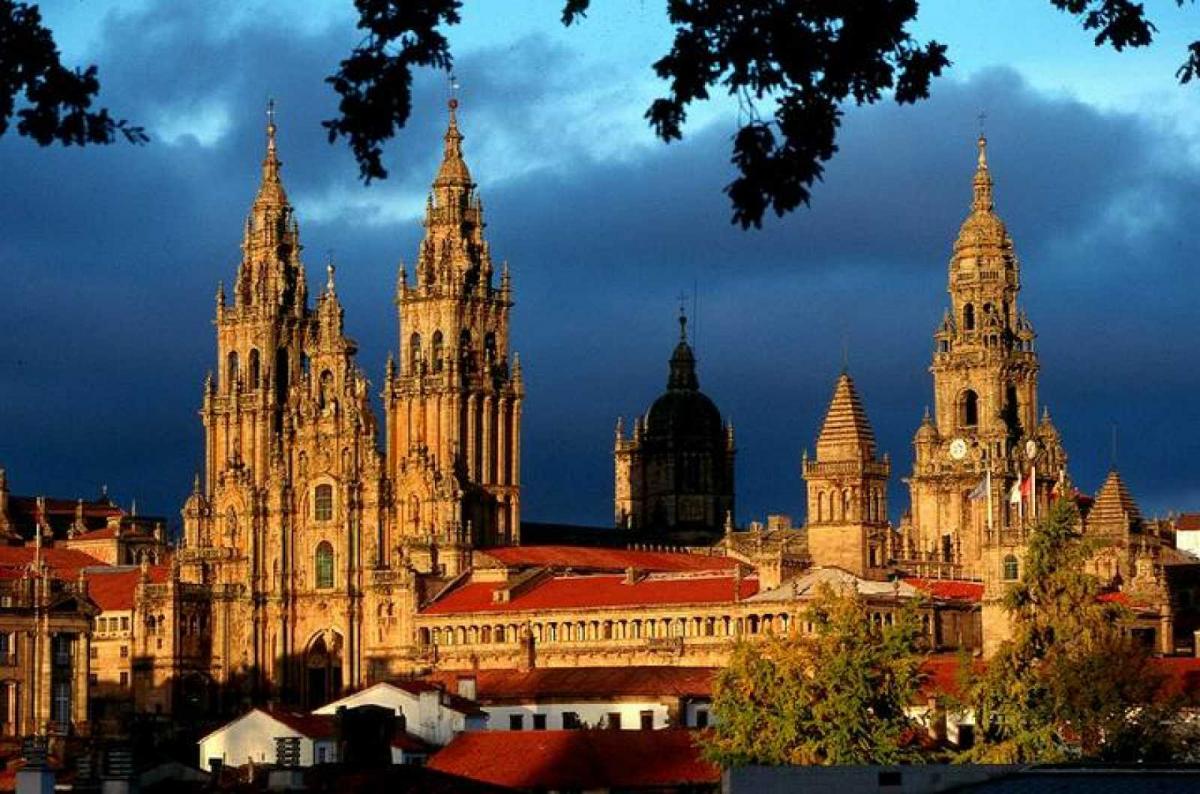
Panoramic view of the Cathedral of Saint James
(Source official website of Spanish television radio)
The Cathedral’s west entrance was finished in 1188 with the culmination of Romanesque sculpture: the “Pórtico de la Gloria.” This magnificent series of three arches, sculpted by Maestro Mateo in only 20 years, endows the vestibule with a high degree of symbolism, whose interpretation is linked to that of the other three exterior façades: original sin, Redemption and Final Judgment. More than 200 granite figures, which had never before been depicted so vividly and expressively in the Middle Ages, interact in a living painting to compose a theological message centred on Man’s Salvation.
The Portico should also be understood as a symbolic ensemble of Heavenly Jerusalem, made up of the lower crypt, the three-arch portico itself and the gallery, at the top of the church, corresponding to Earth, Final Judgement and Glory.
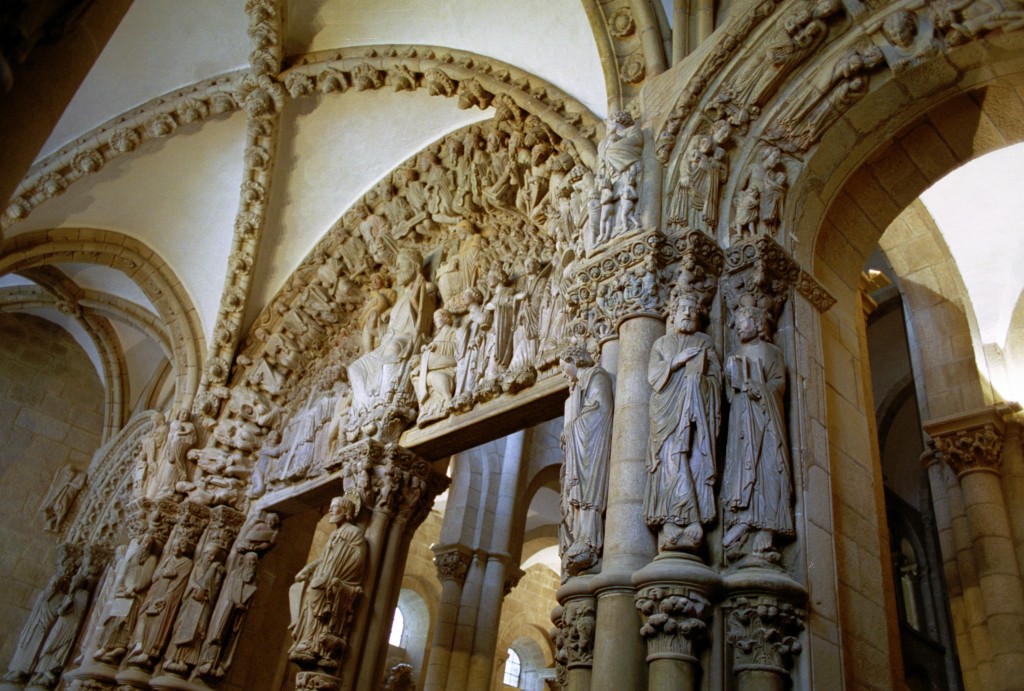
Portico de la Gloria: interior main facade Cathedral of Saint James
The artistic and historical importance of Santiago de Compostela was confirmed when, in 1993, the entire city was made a UNESCO World Heritage Site. This was further corroborated when it became a European city of culture for the year 2000.
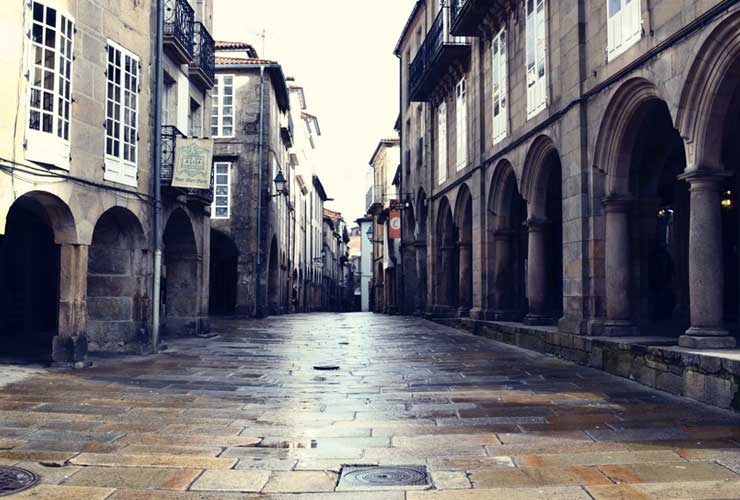
Old Town: Rúa do Vilar
(Source: official website generacion 43)
Moreover, this so-called “city of stone” shelters one of the oldest and most prestigious universities in Spain, the University of Santiago de Compostela, founded in 1495. The University attracts a large number of students, which guarantees the city a youthful ambience.
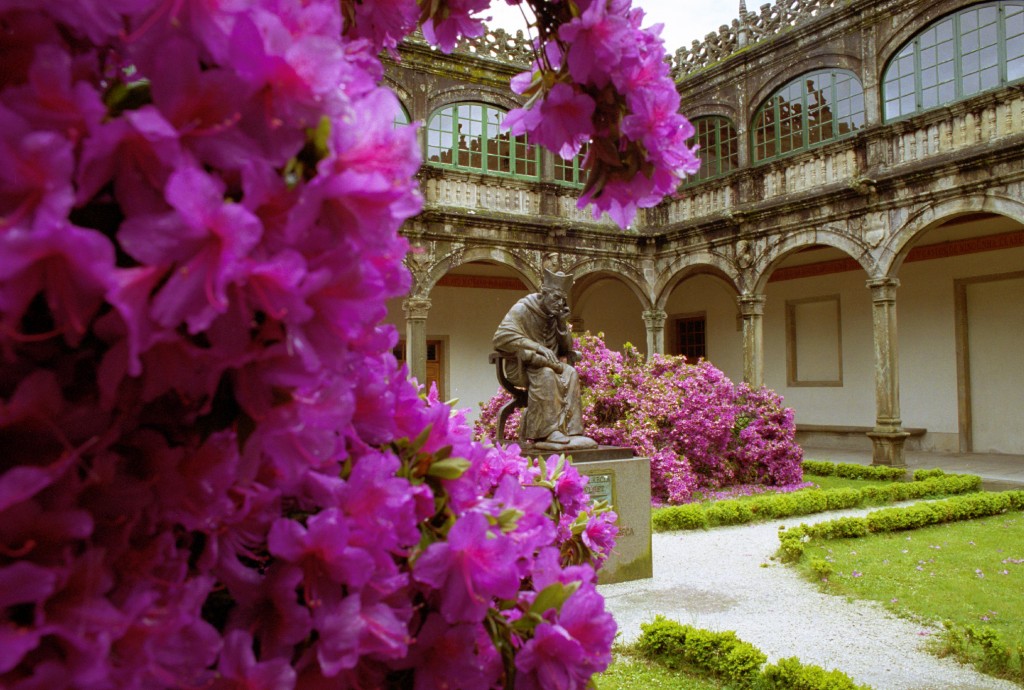
College of San Xerome. Rectorate of the University is hosted in this building
An enchanting city with a rich cultural heritage, nightlife and excellent cuisine, Santiago is just a short distance from some of the most scenic parts of Spain. Driving toward the coast, one can visit the beautiful sunny beaches of the Rías Baixas or the impressive cliffs of the Coast of Death, one of the “Finisterres Europeus”.
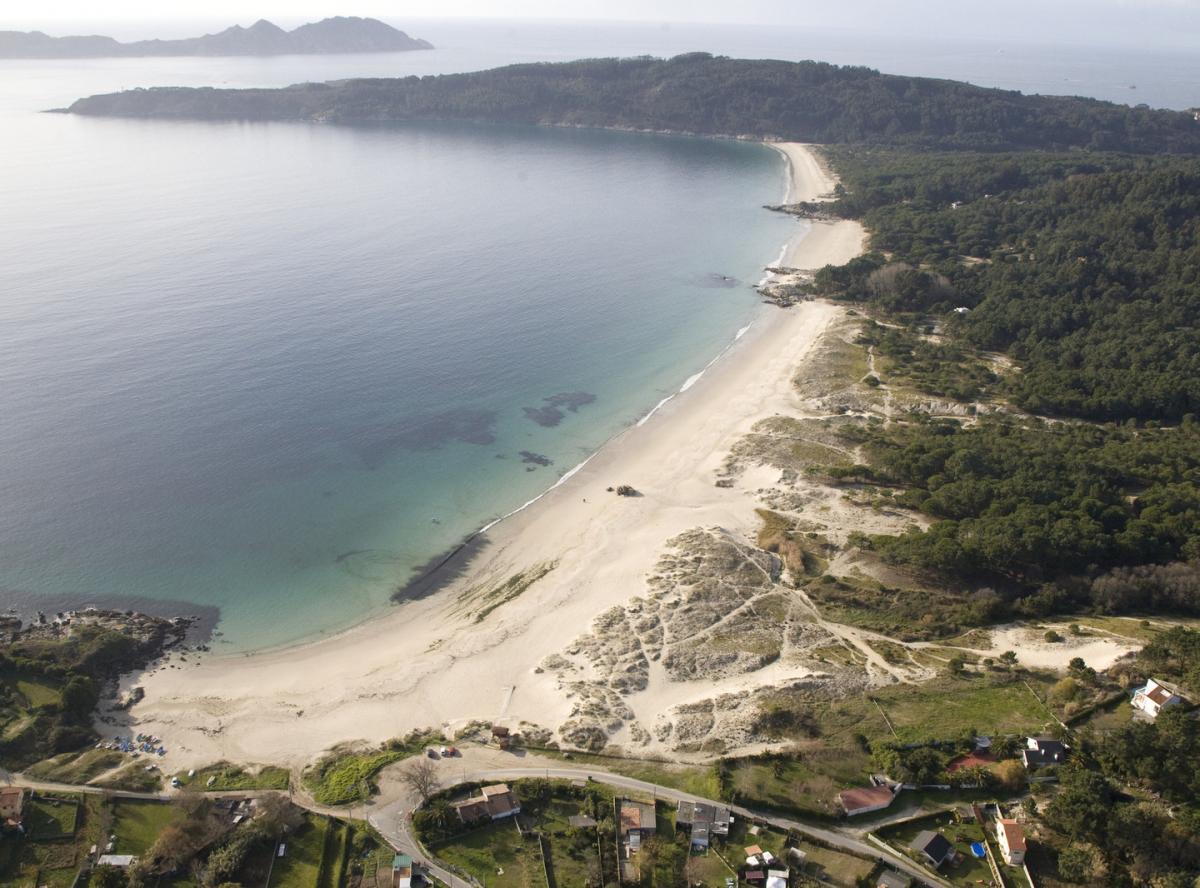
Nerga Beach with Cíes islands at the bottom (Rias Baixas)
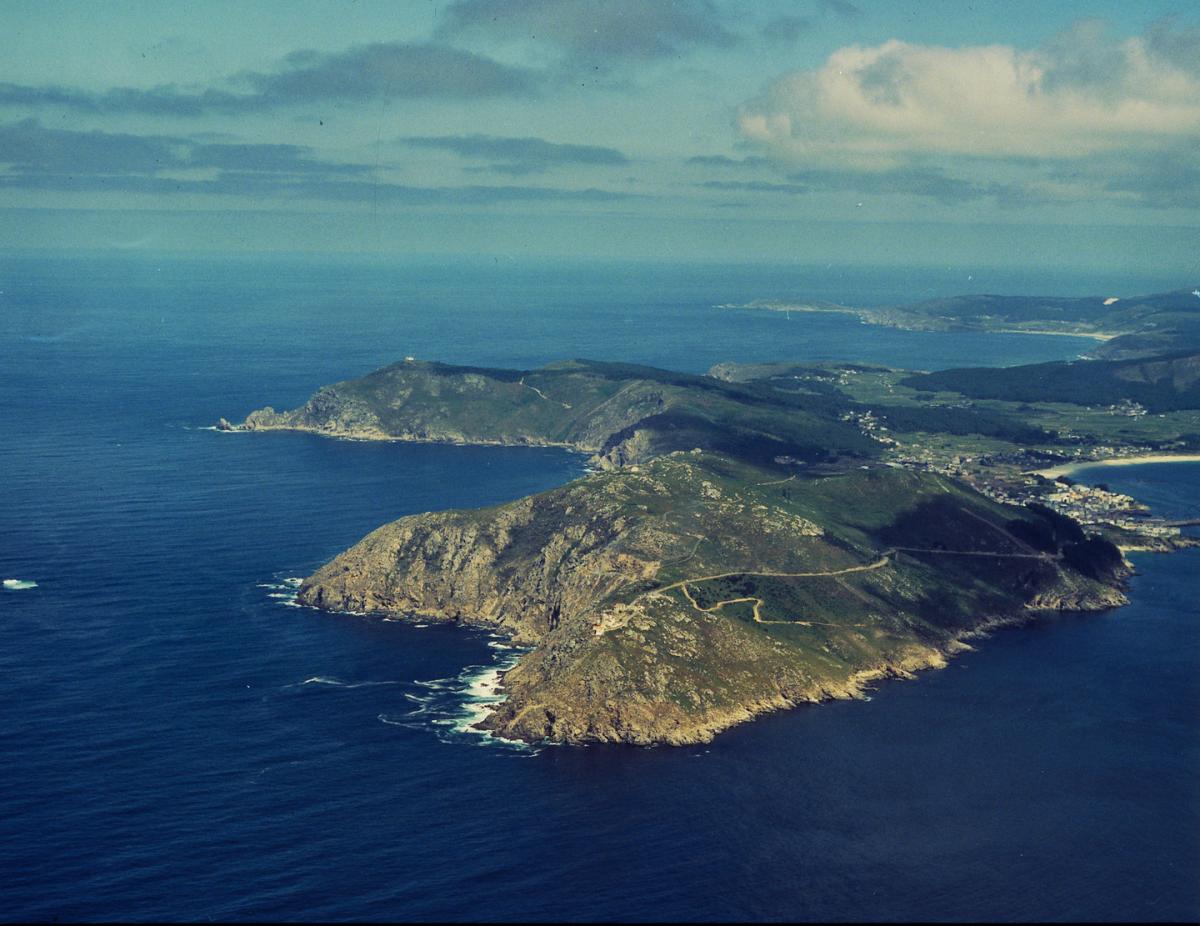
Finisterre Cape in the Death Coast
Travelling inland one can enjoy the mountains of the Ancares National Reservoir or the canyon and gorges along the Sacred Riverside of the River Sil.
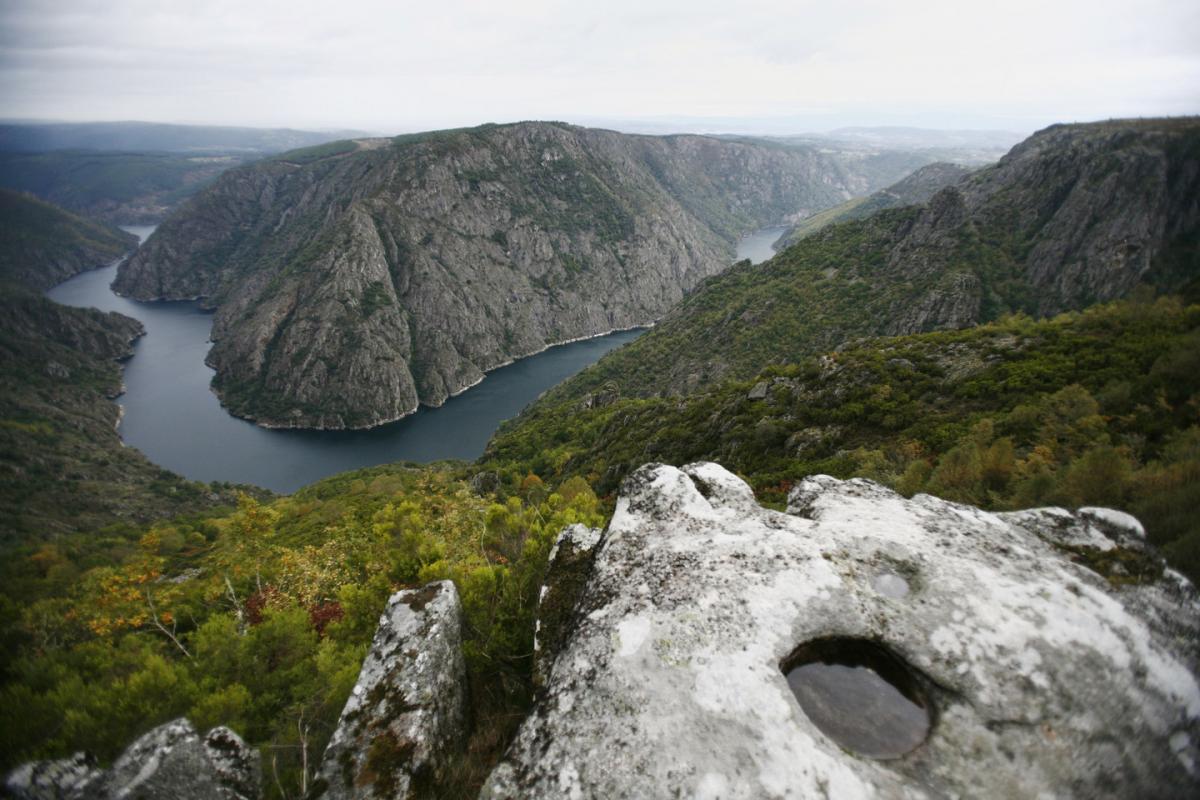
Sacred riverside of the river Sil
For more information and photographs of Santiago, please visit the following internet sites:
www.santiagoturismo.com | The city of Santiago de Compostela: photos, map, cultural guide, news, shopping, gastronomy, services, etc.
www.turismo.gal | Galicia: where to eat, where to stay, what to see, festivals, news, etc.
Photos (without source) courtesy of Turismo de Santiago de Compostela and Turismo de Galicia.



